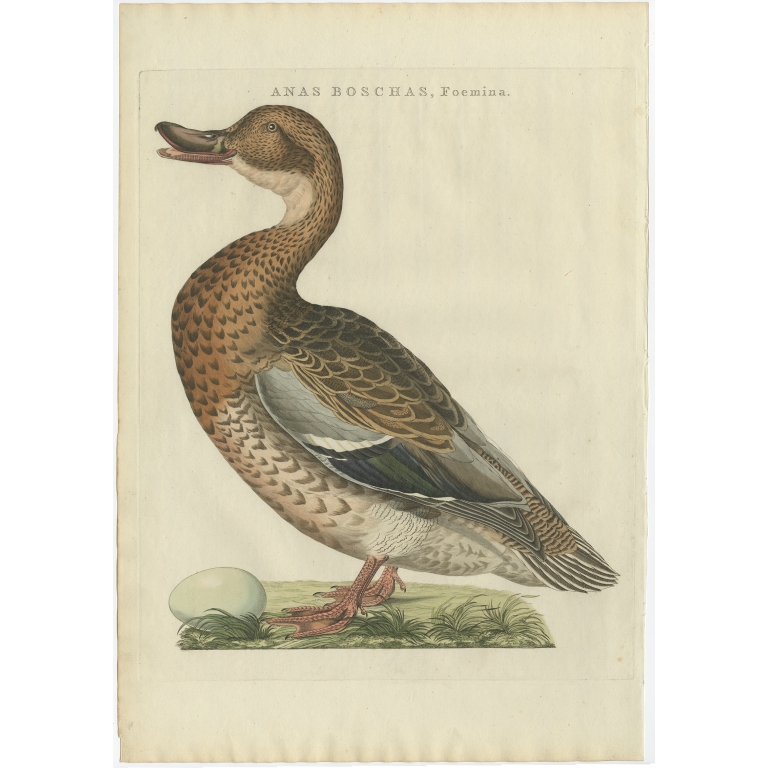FREE
WORLDWIDE
SHIPPING
No products
BG-05991-113
Antique Bird Print of a female Mallard by Sepp & Nozeman (1797)
- Condition: Very good. General age-related toning. Please study image carefully.
- Date: 1797
- Overall size: 36 x 53 cm.
- Image size: 34.6 x 43.2 cm.
Worldwide
shipping

Description: Antique print titled ‘Anas Boschas, Foemina'. This print depicts a female mallard (Dutch: wilde eend). The mallard (Anas platyrhynchos) is a dabbling duck that breeds throughout the temperate and subtropical Americas, Eurasia, and North Africa and has been introduced to New Zealand, Australia, Peru, Brazil, Uruguay, Argentina, Chile, Colombia, the Falkland Islands, and South Africa. This duck belongs to the subfamily Anatinae of the waterfowl family Anatidae. The female lays eight to thirteen creamy white to greenish-buff spotless eggs, on alternate days. Incubation takes 27 to 28 days and fledging takes 50 to 60 days. The ducklings are precocial and fully capable of swimming as soon as they hatch.
This print originates from 'Nederlandsche Vogelen; volgens hunne huisdouding, aert, en eigenschappen beschreeven", Amsterdam, 1770-1829 by C. Nozeman, M. Houttuyn and J.C. Sepp. This is the most important and first study in the Netherlands of ornithology at that time. The birds are depicted as they are in life, said to be depicted close to life sized and in their environment.
Original text page included.
Artists and engravers: This monumental work is associated with Christiaan Andreas Sepp, Jan Christiaan Sepp, Jan Sepp, Cornelis Nozeman, Martinus Houttuyn and Coenraad Jacob Temminck.



